Gibraltar's Secret Wars
The WW II Evacuation of Gibraltar: A Family's Ordeal
Discover the dramatic story of Gibraltar's WWII evacuation. Thousands flee, only to face hardship and uncertainty. Read their struggle to survive and return home.
By Nick Nutter on 2024-03-18 | Last Updated 2025-05-19 | Gibraltar's Secret Wars
This article has been visited 4,050 times

Vichy French air raid on Gibraltar
The Decision to Evacuate Gibraltar
The outbreak of World War II cast a long shadow over Gibraltar. In 1939, the British government made the agonizing decision to evacuate most civilians. Amongst them was a five-year-old girl named Lydia Viagas, who clung to memories of her small house, 4, Danino's Ramp, in the Old Town. Her father, Jose, a footballer, and grocer, stayed behind to join the merchant navy.
Why was Gibraltar Evacuated during WWII?
The civilian population of Gibraltar was evacuated during World War II to make way for a larger military presence and to protect the civilians from potential danger. The British government believed that the Rock needed to be transformed into a fortress to withstand any attacks from the Axis powers, particularly Germany and Spain.
The evacuation involved the relocation of thousands of civilians, mainly women, children, and the elderly, to various locations, including London, Madeira, and Jamaica.
This decision was controversial, as many Gibraltarians felt uprooted and displaced from their homes. However, it was seen as a necessary sacrifice to ensure the territory's security and its role in the Allied war effort.
Do you enjoy my articles? For your reading pleasure, this website does not carry third party ads. You could help me write more articles by buying me a cup of coffee.
First Stop Casablanca
Between the 21st of May and the 24th of June 1940 about 13,500 evacuees, the majority being the elderly and women and children were shipped to Casablanca in French Morocco. Lydia, her mother Imperia, and her two aunts, Leonor, with her one-year-old daughter, Marilou, and Josefa, and their invalided mother, Marianna Psaila Orfilla were shipped to Casablanca with thousands of others on the Egyptian owned Mohamed Ali el-Kebir. Conditions were brutal in the six dance halls and a camp in Ain Chok, a town near Casablanca where they were billeted - communal toilets, straw bedding, and insufficient food.
The French, cruelly, classified the evacuees into three groups, those that could afford decent accommodation, those that could only afford basic housing and those, the majority, which needed financial help. They demanded financial assistance from the British Government to pay for the building of five hundred huts that would house 3,000 Gibraltarians in the industrial area of Roche Noires.
French Surrender to Germany
The French surrender on the 22nd June 1940 turned their fragile situation upside down. On the 3rd of July 1940, elements of the British Fleet, Force H, based in Gibraltar attacked the French fleet at Mers-el-Kebir to prevent the ships falling into German hands. Over a thousand French sailors were killed in the attack. Feelings ran high in Casablanca, home to a French naval base. The French sailors and their families stationed at Casablanca had known men on the ships at Mers-el-Kebir, making the assault a personal insult as well as an affront to France.
The new Vichy French government saw the evacuees as a burden and an embarrassment and pressured them to leave. On the 6th of July the French Protectorate insisted that all Gibraltarian evacuees leave Casablanca immediately or 'measures would have to be taken for their protection'.
Back to Gibraltar


Lydia Viagas in Gibraltar 2019
Chaos descended upon Casablanca on the 10th of July. Commodore Kenelm Creighton, arriving with fifteen ships carrying 18,000 French servicemen who had been rescued from the beaches at Dunkirk, found himself confronted by a new crisis. A throng of Gibraltarian evacuees, including Lydia and her family, swarmed the docks, desperate to escape the increasingly hostile French authorities.
Creighton's orders were clear: no civilians. Yet, the sight of these families, many with children and elderly members, under the unforgiving sun, stirred compassion within him. He defied orders and opened his gangways. However, his ships were woefully unprepared for such a massive influx. Limited galley facilities, cramped quarters designed for crew, and vertical ladders unsuitable for the infirm presented logistical nightmares. The French, adding insult to injury, refused to allow him to restock or clean the vessels or wait for field kitchens to arrive.
Faced with an impossible situation, Creighton made a bold decision. He disregarded further Admiralty warnings and set sail for the familiar shores of Gibraltar, an 11-hour journey. His passengers, crammed onto the upper decks, embarked on this uncertain voyage, a desperate gamble for a temporary haven. When he announced his decision to the Admiralty, his commanding officer, Admiral Dudley North replied, 'For heaven's sake don't. We had enough trouble getting them out.'
The Gibraltarians were not particularly welcome in Britain either. John Anderson, the minister for home security, told the War Cabinet, it was 'desirable to prevent the refugees from being landed in this country if possible, as we have no means of dealing with them except in internment camps.'
Upon arrival in Gibraltar, Governor Sir Clive Liddell met the evacuees with suspicion. He feared the evacuees, once ashore, would resist further relocation. Only after a public outcry and a formal petition did he reluctantly allow them off the ships for cleaning and provisioning. This brief reunion with her father, Jose, offered Lydia a glimmer of hope amidst the unfolding chaos.
On the 18th of July, the Vichy Government authorised an air strike against Gibraltar in retaliation for the attack on the French Fleet.
Embarking for Britain
In the meantime, Creighton's ships were cleaned and re-provisioned for the 16-day journey to Britain. The embarkation records show that, on the 26th of July, Marianna, Leonor, Marilou (recorded as Maria de la Luz in the embarkation record), and Leonoras seven-day-old twins Violetta and Alfred, embarked on the S.S. Athlone Castle. The record reveals a small mystery.
A family story tells of the twins being born while the ship on which they were passengers was evading U boats. Their birth certificates show them as having been born at sea on the 29th of July, three days after embarkation. The embarkation record for the Athlone Castle also recorded incorrect ages for Marianna and Leonor. There were many inaccuracies on the embarkation records as the authorities hurriedly dealt with thousands of residents as those in power rushed to have them once more removed from Gibraltar.
On the 29th of July, Lydia (recorded as Lidia in the embarkation record), and Imperia (recorded as Hemperia in the embarkation records), were put on board the S.S. Strategist.
The convoy of twelve ships sailed on the 30th of July. Josepha was to remain behind until the 19th of August when she sailed to the UK on the S.S. Neuralia. Creighton, with a skeleton crew and just one escort ship, the Corvette, HMS Wellington, led the convoy of twelve ships far into the Atlantic, evading German U-boats. Within six days most of the provisions were inedible due to poor storage conditions. Water was strictly rationed. Evacuees delivered babies born during the voyage. Some elderly evacuees died during the journey and were buried at sea. The journey was a nightmare - dwindling rations, cramped conditions, and the constant fear of enemy attacks. Lydia remembers sleeping on a thin mattress, hunger gnawing at her belly.
A Temporary London Home


Antonia Garcia, Imperia and Teresa (Gibraltar 1926)
After a gruelling sixteen days, Creighton shepherded his flock into Liverpool, Swansea, Cardiff, and Bristol. Lydia and Imperia found themselves in Swansea where they disembarked on the 14th of August. A train took them to London, just as the Blitz began. The evacuees found themselves housed in groups in places such Dr Barnardo's Home and Whitelands College while a lucky few were accommodated in housing left by Londoners evacuating London in the Wembley and Kensington areas. After a brief time at Wembley where Imperia gave birth to Flodelis, Lydia and her mother found themselves living in Kensington Palace Mansions whilst her grandmother and aunts stayed at the Empire Pool at Wembley Stadium. London became their new, terrifying home. Tragedy struck when Leonor's twins died from illness. The family moved from shelter to shelter, never truly settling down.
Concern for the safety of the evacuees during the Blitz led to 2,000 being shipped to Madeira. Jamaica received about 2,000 evacuees who travelled there directly from Gibraltar during October 1940.
Relocated to Tottenham


Gibraltar refugees in Richmond Park
The family relocated to Tottenham, finding themselves housed in a school. While each had a room, meals were communal in the canteen. Life remained a struggle, albeit with a roof over their heads and regular meals. Lydia's mother, resourceful as ever, stretched their limited resources by making soup from leftover bacon bones.
A stroke of luck brought Jose back to the family during this period. On his last voyage on a Russian convoy, his ship was torpedoed and sank in the frigid Arctic waters. He was one of the few lucky ones to be rescued. He rejoined his family in London, taking a job as an Air Raid Warden. The irony of this role was not lost on him. One night, the city groaned under the weight of a bombing raid. As an air raid warden, Jose witnessed a bomb explode near the local hospital, sending a jolt of terror through him. His daughter, Lydia, had just been admitted for tonsillitis. Fear propelled him in a desperate sprint towards the hospital, his legs burning with exertion. Reaching the facility, he was met with a bureaucratic nightmare - entry was denied until the building was deemed safe. The agonizing wait stretched into hours before anxious relief washed over him. Lydia was safe. He later confided in her, describing how his legs had seized up from the frantic run, unable to hold him upright upon reaching the hospital.
The bombing, however, brought a stark reminder of the war's brutality. Another child, David, a five-year-old friend of Lydia's from her mother's circle, was not as fortunate. The blast claimed his life. David's mangled body, unrecognizable beneath bandages, could only be identified by his teeth - the sole remnant of his innocence lost to the war's savagery.
First Evacuees Return to Gibraltar


Home Again Gibraltar
With the Italian surrender in September 1943, Gibraltar's strategic significance diminished. This led to a reduction in military presence, freeing up housing. By April 1944, repatriation efforts began with the first group of over 1,300 Gibraltarians returning from the UK.
Repatriation, however, depended on there being accommodation available on Gibraltar, school places for children, medical services able to cope with an increasing population and, initially at least, family members already on Gibraltar to support those returning. Jose, Imperia, and Lydia did not meet the conditions for early repatriation.
Relocated to Norther Ireland
The dwindling air raids in London brought a new kind of hardship for the Gibraltarians. Homeowners, eager for their homes back, displaced the evacuees once more. This time, five hundred were shipped off to Scotland and a staggering 3,000 to camps in Northern Ireland. A cruel twist of fate: they were told it was a quick stopover in Ireland before returning to Gibraltar. Many, believing this, sent most of their belongings, including crucial winter clothes, ahead to the Rock.
1945 found Lydia and her family in a bleak Northern Irish camp. It was, undeniably, their lowest point. Work was non-existent and work permits unobtainable. The primitive conditions offered little solace. Only one camp boasted electricity, and ration cards remained out of reach. Imperia scraped by on a meagre weekly allowance, barely enough to sustain a family. Twelve such camps dotted Northern Ireland, eight in County Antrim alone.
These camps were a collection of hastily erected Nissen huts scattered across fields. Large communal huts housed the school, community centre, and kitchen, with smaller ones designated for families. Divided down the middle, each family hut offered a meagre separation between sleeping quarters for men and women. Lydia recalls Spanish filling the air in the community centre, a constant reminder of their homeland. Winter's bite was especially harsh, forcing the men to improvise coats from army blankets - a desperate attempt to keep warm in clothes more suited to the Mediterranean sun.
Back to London


Teresa Maria Knight
Hope flickered for the family when Jose reached out to his half-sister, Teresa Maria Knight, in Wales. Her husband, William, offered a lifeline - a job in Swansea. With this opportunity, Jose managed to escape the seemingly endless evacuation program. He wasted no time returning to Ireland, reuniting with Imperia, Lydia, and Flodelis. Finally, they ventured back to London, settling in the Victoria area.
Jose's newfound job provided a much-needed sense of stability. It allowed them to move from cramped quarters to a spacious flat in Camberwell. This newfound security extended beyond his immediate family. Jose, ever the provider, reached out to his extended family languishing in the Irish camps. Leonor, her daughter Marilou, Josefa, and Marianna all found refuge under their roof. The children integrated into local schools, and a semblance of normalcy finally took hold.
The prospect of repatriation, once a glimmer of hope, now presented a difficult choice. By the time Jose qualified to return to Gibraltar, it would mean uprooting the family once again. This hard-won sense of belonging in London, this feeling of finally having a place to call home, was a powerful counterpoint to the pull of their homeland.
Return to Gibraltar
Years passed, filled with bureaucratic hurdles and broken promises. As late as 1947 there were still 2,000 Gibraltarians in camps in Northern Ireland, and the last of the evacuees would not see the Rock of Gibraltar again until 1951. Lydia, however, would not return until 2011. The war had scattered her family across the globe, leaving an indelible mark on their lives.
Memorials to the Evacuees


Evacuation Memorial Gibraltar
In Funchal on Madeira, alongside a small chapel at Santa Caterina Park is a memorial that was made in Gibraltar and shipped to Madeira to express the gratitude of the people of Gibraltar to the island of Madeira and its inhabitants. On Gibraltar, the evacuees are remembered with a statue on the roundabout on North Mole Road and a plaque in the lobby of Gibraltar's Parliament.
The evacuation of Gibraltar was a story of resilience, heartbreak, and the enduring spirit of a community. It is a story Lydia carries with her, a testament to the human cost of war that continues to resonate today.
The Best Guide to Gibraltar
First published in 2016, The Rock from Bottom to Top was due for an overhaul. We are pleased to publish a second edition on the 320th anniversary of Britain's capture of Gibraltar in 1704.
Completely updated with new images, stories, and anecdotes, Exploring Gibraltar is like no other travelogue or guidebook.
Exploring Gibraltar: The Rock from Bottom to Top is for anybody interested in the history, attractions, and culture of Gibraltar.

FREE to read on Kindle Unlimited, available as an Ebook download and full colour paperback.
Do you enjoy my articles? For your reading pleasure, this website does not carry third party ads. You could help me write more articles by buying me a cup of coffee.
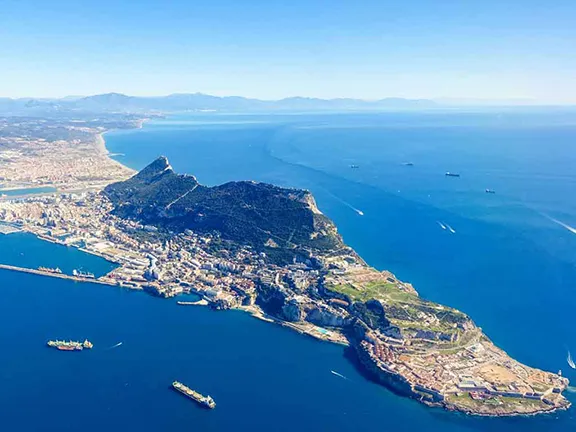 1: Defending Gibraltar in WWII
1: Defending Gibraltar in WWII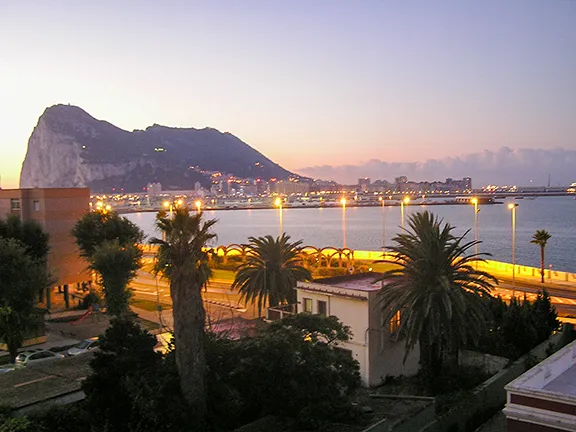 2: Operation Felix - Hitler's Plan to Capture Gibraltar
2: Operation Felix - Hitler's Plan to Capture Gibraltar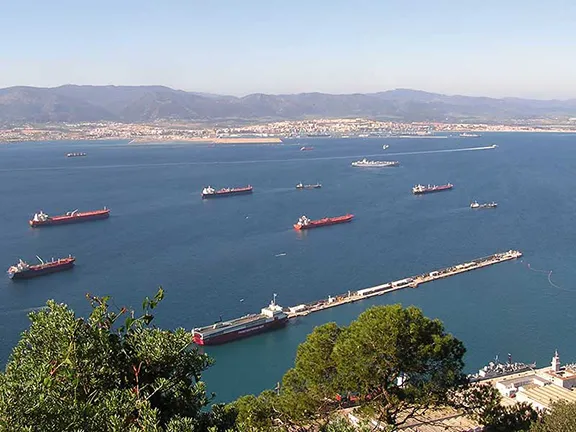 3: Operation Tracer - the Stay Behind Chamber
3: Operation Tracer - the Stay Behind Chamber 5: Gateway to Freedom for Escapers and Evaders
5: Gateway to Freedom for Escapers and Evaders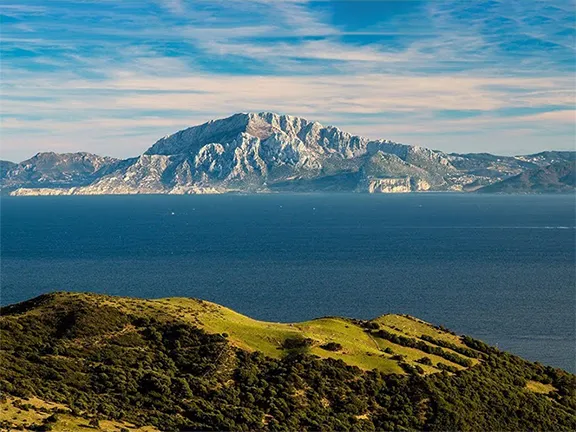 6: Gibraltar's Secret Flotilla during WW II
6: Gibraltar's Secret Flotilla during WW II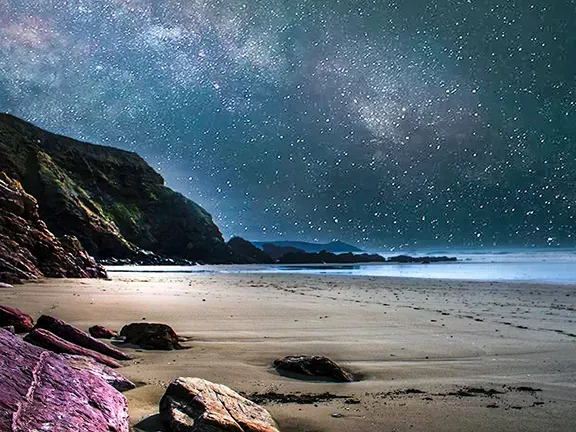 7: Covert Missions to France and North Africa
7: Covert Missions to France and North Africa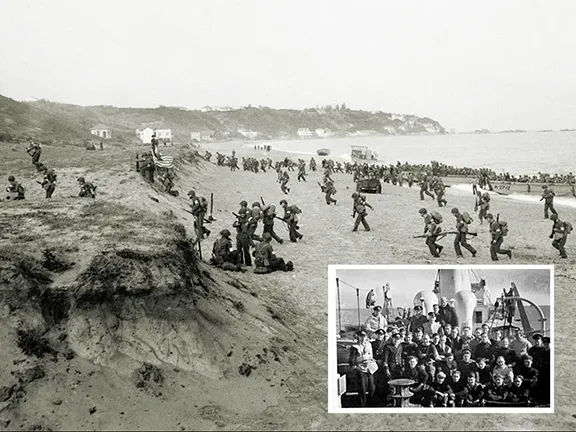 8: Letter from the Front - Personal Recollections
8: Letter from the Front - Personal Recollections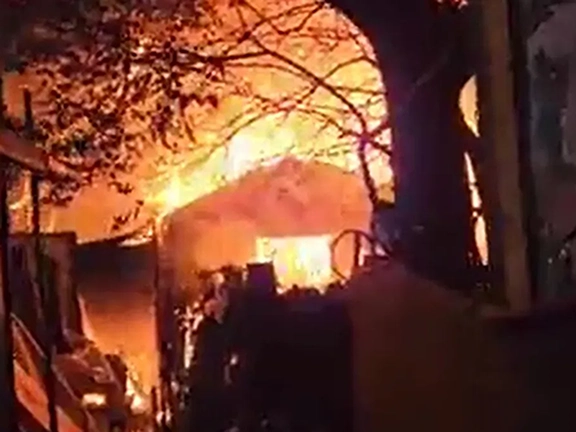 9: Operation Relator - SOE create mayhem in Gib
9: Operation Relator - SOE create mayhem in Gib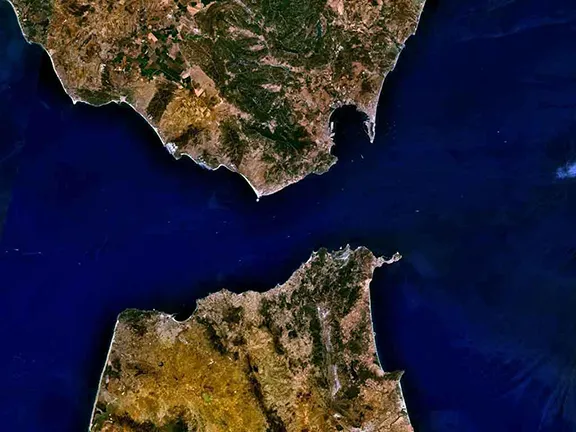 10: Operation Ursa Major - Prelude
10: Operation Ursa Major - Prelude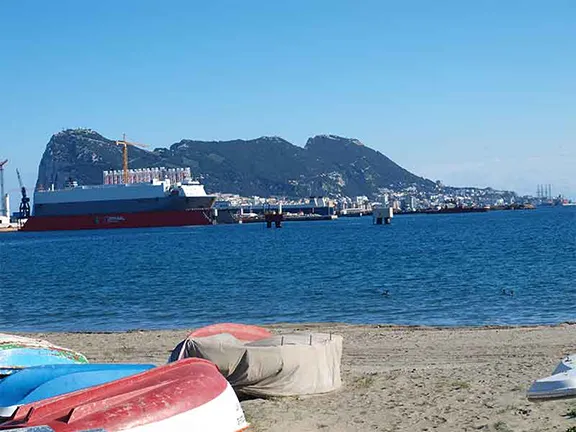 11: Operation Ursa Major - The Olterra
11: Operation Ursa Major - The Olterra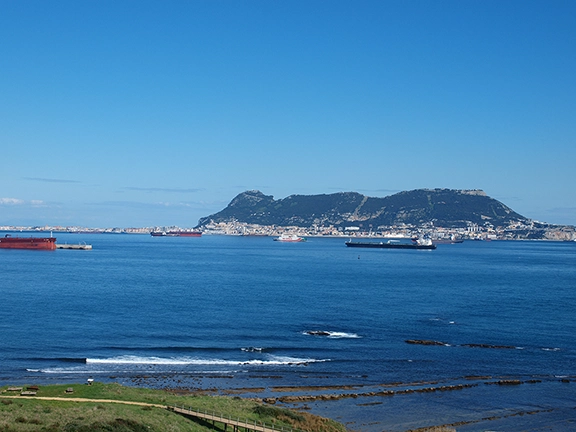 12: Operation Ursa Major - Execution
12: Operation Ursa Major - Execution 13: Operation Falaise - Zap a Nazi Spy Nest
13: Operation Falaise - Zap a Nazi Spy Nest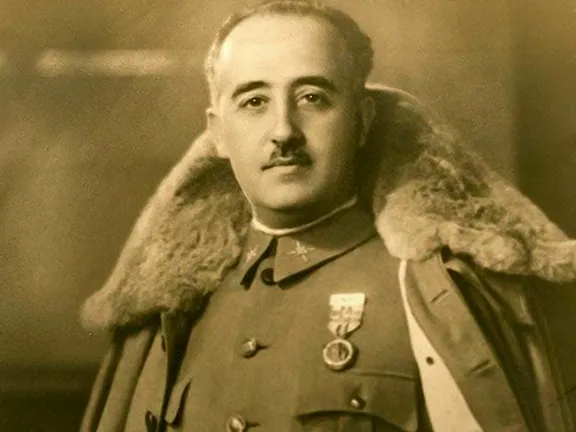 14: UK Policy towards Spain - Spanish Civil War
14: UK Policy towards Spain - Spanish Civil War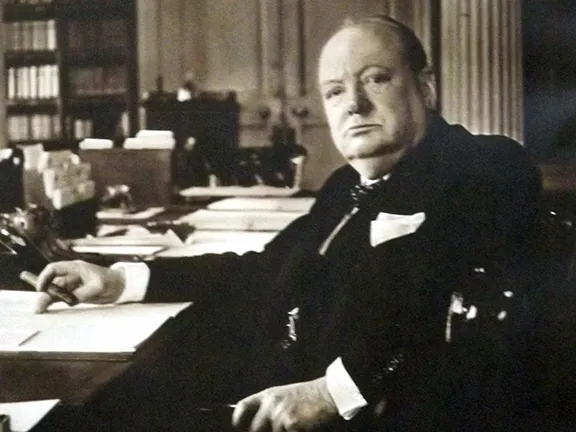 15: UK Policy towards Spain - 1940-1942
15: UK Policy towards Spain - 1940-1942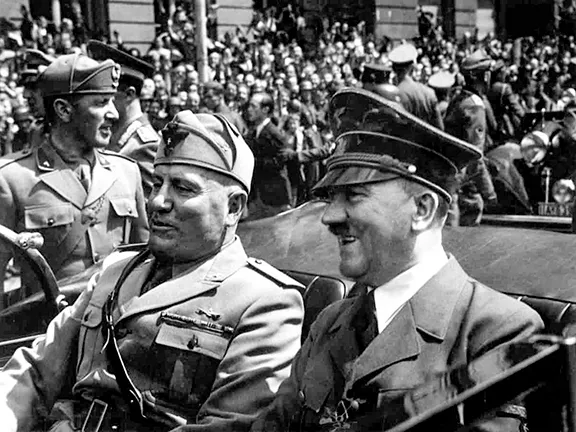 16: UK Policy towards Spain 1942 - 1945
16: UK Policy towards Spain 1942 - 1945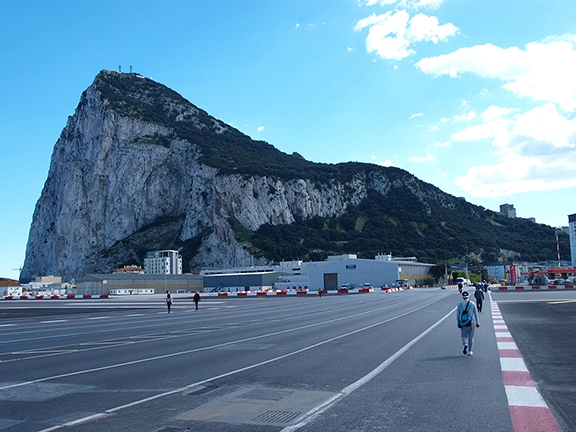 17: Abwehr Operations - Gibraltar WWII
17: Abwehr Operations - Gibraltar WWII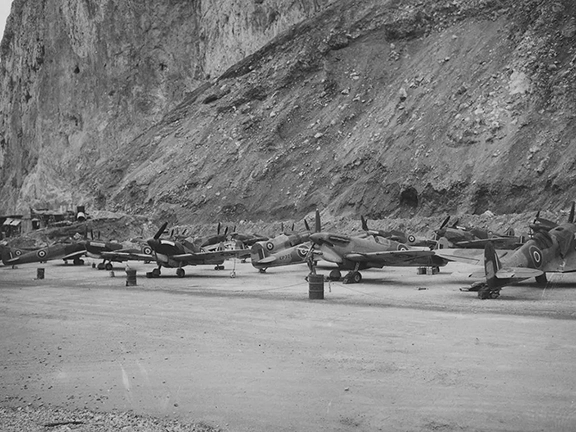 18: Counter Espionage - Gibraltar WWII
18: Counter Espionage - Gibraltar WWII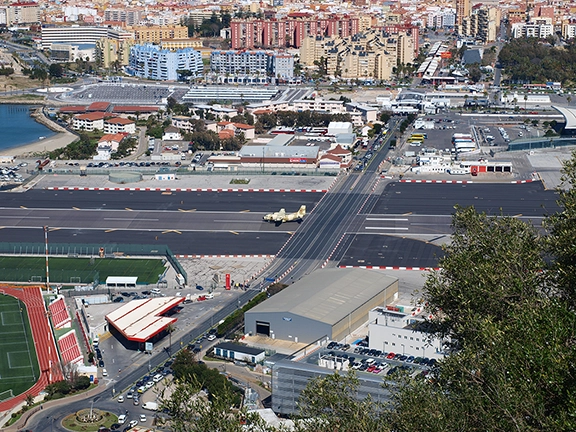 19: Operation Algeciras - 1982
19: Operation Algeciras - 1982